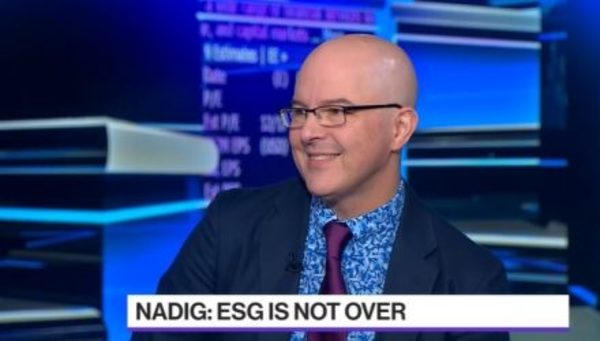VettaFi Financial Futurist Dave Nadig appeared on Bloomberg’s ETF IQ to discuss the troubled markets, where flows are going, ESG, and more.
Even during challenging markets, money is always moving somewhere. “This time, what we’ve seen is a lot of money flowing into safety plays,” Nadig said. ETFs continue to see big inflows in defiance of the precarious general market environment. According to Nadig, even last month, fifteen billion when into equities and bonds.
“In the equity market, what we see is a lot of rotation in the last quarter to safety plays. We saw a big move toward dividend strategies – really as a proxy for quality, that seems to have pulled back, and we’ve seen the research pull back on that as well,” Nadig said, noting funds like the iShares MSCI USA Min Vol Factor ETF (USMV ) have started catching on as investors seek answers to broader market volatility.
Bond ETFs are also starting to get some flows, Balchunas observed, saying to Nadig, “I love your firm; you do some really cool polling of advisors; you polled some advisors on why they are doing this; what did you find?” According to Nadig, VettaFi’s most recent poll on what advisors are using their bond allocations for indicated that one-third of advisors are using bonds for income, with two-thirds saying it was a safety play.
“This is clearly a parking vehicle market,” Nadig said, pointing out that even though there have been flows into funds like iShares iBoxx $ Investment Grade Corporate Bond ETF (LQD ), most of these inflows are in the short-duration treasuries.
Speaking more about VettaFi and his job as a financial futurist, Nadig acknowledged that most people might know about it from some of the brands under the hood, like ETF Database and Alerian. Nadig said, “What we’re doing is helping asset managers understand what’s going on in the financial advisor market and help financial advisors understand what’s going on in asset management land. We’ve got 450 new funds this year – just helping advisors understand which ones of those are useful tools and which one may be just flash in the pan trading vehicles; that’s really a full-time job itself. Much less trying to look out 3-5 years and trying to see where the market is going.”
Donning his Financial Futurist hat, Nadig observed two big trends in ETFs, one of which he dubbed the aggressive trading tools – the single stock and single treasury duration maturity ETFs.
“We’ve also seen a lot of interest action in the alternatives space,” Nadig said, pointing to the impressive performance of iMGP DBi Managed Futures Strategy ETF (DBMF ) as a great example of the second kind of fund being cooked up in the ETF oven. Nadig expects many more funds, like DBMF, that focus on counter-correlated assets.
Balchunas wondered why currency ETFs focused on the dollar aren’t more popular, given the historic strength of the dollar and its performance five years ago. “I think mostly that’s a fear of international investing, period,” Nadig responded. Funds like Invesco DB US Dollar Index Bullish Fund (UUP ) have pulled in a ton of money, but Nadig noted that other funds have struggled to pull in assets because nobody wants to be in emerging markets at all.
With funds that are explicitly anti-ESG coming to the table, Balchunas pondered whether or not ESG’s moment was over. Nadig said it wasn’t and applauded funds like Engine No. 1 Transform 500 ETF (VOTE ), which allows investors to vote with their dollars. Strive’s anti-ESG funds have also made a splash. However, Nadig questioned their implementation, noting the high fees for what is basically a computer chip ETF that doesn’t own Taiwan Semiconductor, “I’m not sure whether the market really needs that or not, but I do think this idea of people voting with their pocketbooks is a good idea.” Nadig also observed that the semiconductor market could see some depression due to conflicts over borders, “it’s not always about just coming up with a clever index. You’ve got to understand the entire microenvironment that lives in.”
For more news, information, and strategy, visit VettaFi.

